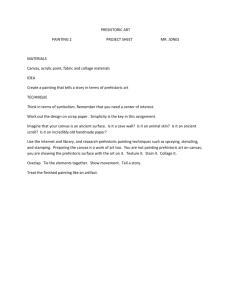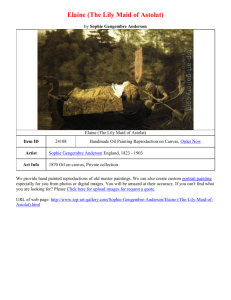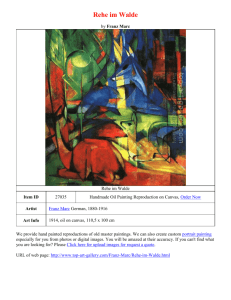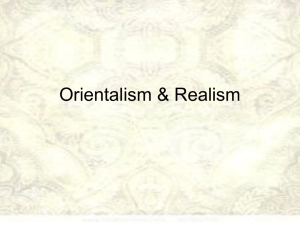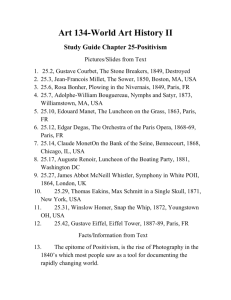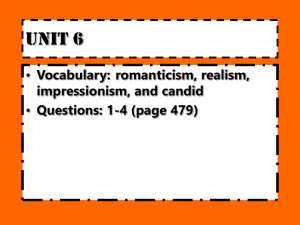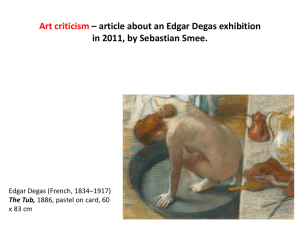Art Analysis
advertisement
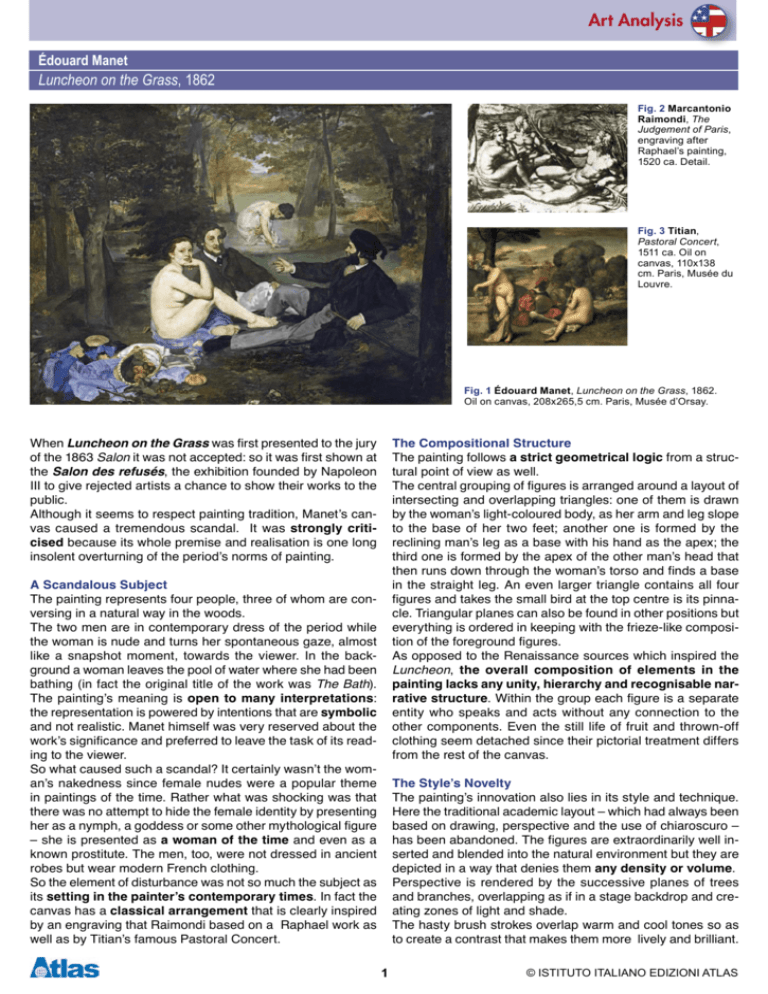
Art Analysis édouard Manet Luncheon on the Grass, 1862 Fig. 2 Marcantonio Raimondi, The Judgement of Paris, engraving after Raphael’s painting, 1520 ca. Detail. Fig. 3 Titian, Pastoral Concert, 1511 ca. Oil on canvas, 110x138 cm. Paris, Musée du Louvre. Fig. 1 Édouard Manet, Luncheon on the Grass, 1862. Oil on canvas, 208x265,5 cm. Paris, Musée d’Orsay. When Luncheon on the Grass was first presented to the jury of the 1863 Salon it was not accepted: so it was first shown at the Salon des refusés, the exhibition founded by Napoleon III to give rejected artists a chance to show their works to the public. Although it seems to respect painting tradition, Manet’s canvas caused a tremendous scandal. It was strongly criticised because its whole premise and realisation is one long insolent overturning of the period’s norms of painting. The Compositional Structure The painting follows a strict geometrical logic from a structural point of view as well. The central grouping of figures is arranged around a layout of intersecting and overlapping triangles: one of them is drawn by the woman’s light-coloured body, as her arm and leg slope to the base of her two feet; another one is formed by the reclining man’s leg as a base with his hand as the apex; the third one is formed by the apex of the other man’s head that then runs down through the woman’s torso and finds a base in the straight leg. An even larger triangle contains all four figures and takes the small bird at the top centre is its pinnacle. Triangular planes can also be found in other positions but everything is ordered in keeping with the frieze-like composition of the foreground figures. As opposed to the Renaissance sources which inspired the Luncheon, the overall composition of elements in the painting lacks any unity, hierarchy and recognisable narrative structure. Within the group each figure is a separate entity who speaks and acts without any connection to the other components. Even the still life of fruit and thrown-off clothing seem detached since their pictorial treatment differs from the rest of the canvas. A Scandalous Subject The painting represents four people, three of whom are conversing in a natural way in the woods. The two men are in contemporary dress of the period while the woman is nude and turns her spontaneous gaze, almost like a snapshot moment, towards the viewer. In the background a woman leaves the pool of water where she had been bathing (in fact the original title of the work was The Bath). The painting’s meaning is open to many interpretations: the representation is powered by intentions that are symbolic and not realistic. Manet himself was very reserved about the work’s significance and preferred to leave the task of its reading to the viewer. So what caused such a scandal? It certainly wasn’t the woman’s nakedness since female nudes were a popular theme in paintings of the time. Rather what was shocking was that there was no attempt to hide the female identity by presenting her as a nymph, a goddess or some other mythological figure – she is presented as a woman of the time and even as a known prostitute. The men, too, were not dressed in ancient robes but wear modern French clothing. So the element of disturbance was not so much the subject as its setting in the painter’s contemporary times. In fact the canvas has a classical arrangement that is clearly inspired by an engraving that Raimondi based on a Raphael work as well as by Titian’s famous Pastoral Concert. The Style’s Novelty The painting’s innovation also lies in its style and technique. Here the traditional academic layout – which had always been based on drawing, perspective and the use of chiaroscuro – has been abandoned. The figures are extraordinarily well inserted and blended into the natural environment but they are depicted in a way that denies them any density or volume. Perspective is rendered by the successive planes of trees and branches, overlapping as if in a stage backdrop and creating zones of light and shade. The hasty brush strokes overlap warm and cool tones so as to create a contrast that makes them more lively and brilliant. 1 © Istituto Italiano Edizioni Atlas
